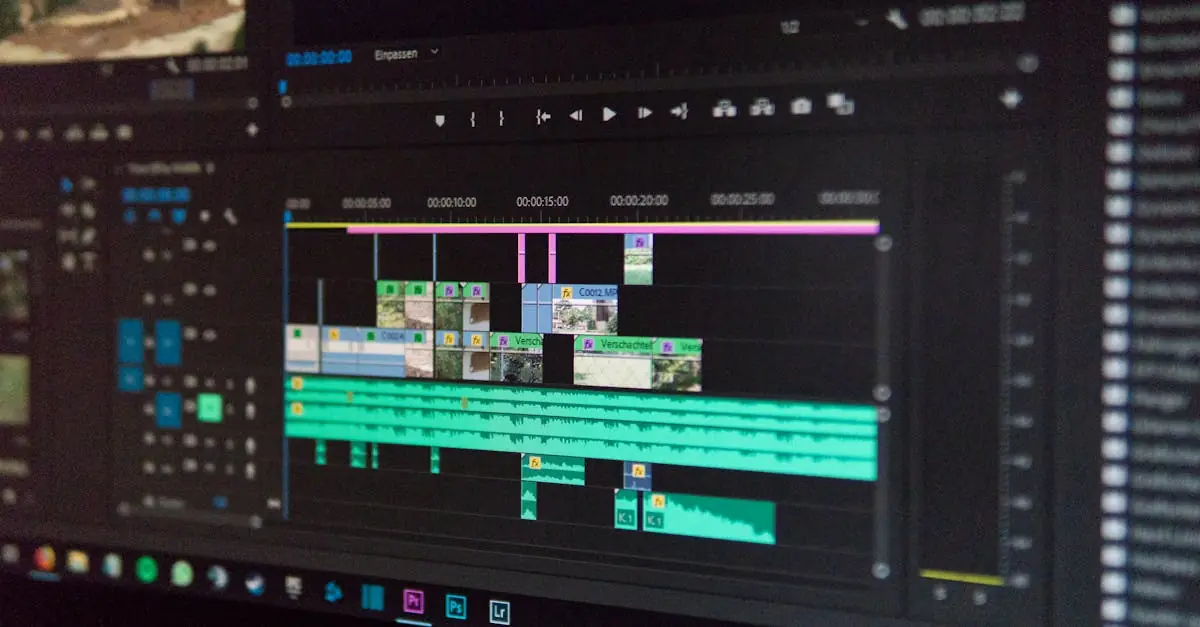Navigating the world of grant applications can feel like trying to solve a Rubik’s Cube blindfolded. With deadlines lurking around every corner, one misstep could send an applicant spiraling into chaos. Understanding grant application timelines isn’t just a nice-to-have; it’s the secret sauce that could mean the difference between funding success and a lonely inbox.
Table of Contents
ToggleUnderstanding Grant Application Timelines
Navigating grant application timelines is essential for securing funding. Familiarity with these timelines helps grant seekers avoid obstacles and streamline their efforts.
Importance of Timelines in Grant Applications
Timelines guide grant applicants in planning their proposals. They help applicants allocate sufficient time for research, writing, and gathering documents. Missing deadlines can result in disqualification from the funding process. With clear timelines, applicants keep tasks organized, ensuring all necessary components are completed. Knowing when to submit is critical for demonstrating professionalism. Timelines also assist in coordinating with team members, financing partners, and other stakeholders involved in the project.
Key Phases of Grant Application Timelines
Grant applications consist of essential phases that require careful timing. The initial phase involves identifying suitable funding opportunities. Once identified, applicants conduct research to understand specific requirements. Following this, applicants enter the writing phase, where they draft proposals. Each stage requires specific time allocations to enhance the quality of submissions. After drafting, revisions and feedback from collaborators are necessary. Final submissions occur on or before the specified deadline. Monitoring progress throughout these phases ensures that all components align with the grant’s objectives and timelines.
Setting Realistic Deadlines
Setting realistic deadlines enhances the efficiency of grant applications. Understanding the factors influencing timelines helps in framing achievable goals.
Factors to Consider
Budget constraints impact the timeline, as financial resources determine the scope of activities. Team availability plays a crucial role; if key members are engaged in other projects, progress slows down. Grant requirements often dictate specific formatting and content, which consume additional time during preparation. Review processes also affect timelines; allowing for feedback from stakeholders can refine proposals but may require longer completion periods. Finally, the complexity of the proposed project largely influences how much time is necessary to develop a comprehensive application.
Tips for Estimating Timeframes
Start by breaking down the application process into manageable phases. Define each phase clearly to maintain focus on individual tasks. Use past experiences to gauge time requirements for similar applications. Allocate buffer time for unexpected challenges, which often arise during the process. Communicate with team members to gather insights on their workload, ensuring timelines are realistic and considerate of everyone’s responsibilities. Monitor progress regularly to adjust estimated timeframes when necessary, ensuring all elements align with deadlines effectively.
Common Challenges in Grant Application Timelines
Grant applicants face several challenges that can disrupt their timelines, directly impacting funding success. Delays can arise from various sources, including administrative processes, unforeseen complications, and miscommunication among team members.
Delays and Their Impact
Delays in grant applications can lead to missed opportunities. They often stem from insufficient planning, leading to rushed submissions or incomplete proposals. Timelines can shift due to internal reviews taking longer than expected or external factors, such as changes in grant requirements. Such setbacks may result in loss of credibility with grant agencies. Furthermore, applicants may find themselves unprepared to address changes in grant specifications, which can compromise the quality of their submissions.
Strategies to Overcome Challenges
Implementing effective strategies can mitigate delays in grant application timelines. First, establish a detailed timeline that aligns tasks with deadlines. Dividing responsibilities among team members ensures efficiency. Incorporate buffer periods within the timeline for unanticipated obstacles. Keeping open lines of communication fosters collaboration, allowing teams to quickly address issues. Regularly reviewing progress against the timeline helps identify potential bottlenecks early, enabling timely adjustments. Ultimately, these strategies enhance overall productivity and improve the likelihood of successful grant applications.
Tools to Manage Grant Application Timelines
Managing grant application timelines requires effective tools that enhance organization and efficiency. Two primary resources for this purpose include project management software and timeline templates.
Project Management Software
Project management software streamlines collaboration among team members. Tools like Asana, Trello, and Monday.com allow easy assignment of tasks with clear deadlines. Members can track progress through visual boards that show work status in real time. These platforms also facilitate communication by integrating messaging features, reducing the risk of misunderstandings. Moreover, users can upload supporting documents and comments for each task, ensuring everyone stays informed about project requirements.
Timeline Templates and Resources
Timeline templates provide structured frameworks that save time when planning. Various resources, available online, offer customizable templates that fit different grant application needs. Users can adapt these templates to include specific milestones, deadlines, and responsibilities. Utilizing templates ensures that grant seekers maintain focus on key phases of the application process. Resources such as Google Drive and Microsoft Office offer shared editable templates, encouraging team collaboration and ensuring accessibility to all members working on the application.
Navigating grant application timelines is essential for any successful funding pursuit. By understanding and managing these timelines effectively, grant seekers can enhance their chances of securing the necessary support. Utilizing tools like project management software and timeline templates can streamline the process and foster collaboration among team members.
Setting realistic deadlines and regularly monitoring progress not only mitigates potential delays but also reinforces professionalism in submissions. By being proactive and organized, applicants can avoid common pitfalls and position themselves favorably with grant agencies. Ultimately, a well-structured timeline is a key component in achieving grant application success.



